Back to top: Overview
Introduction
The best stratified ceramics from the Akkadian period in Urkesh is found in the various rooms and two courtyards of the Palace of Tupkish (for the 3D reconstruction of the Palace see Buccellati, F. 2016; this palace is also known in the UGR as Palace AK, a name we used when we found the seal impressions with the name of Tupkish stratified in the palace.
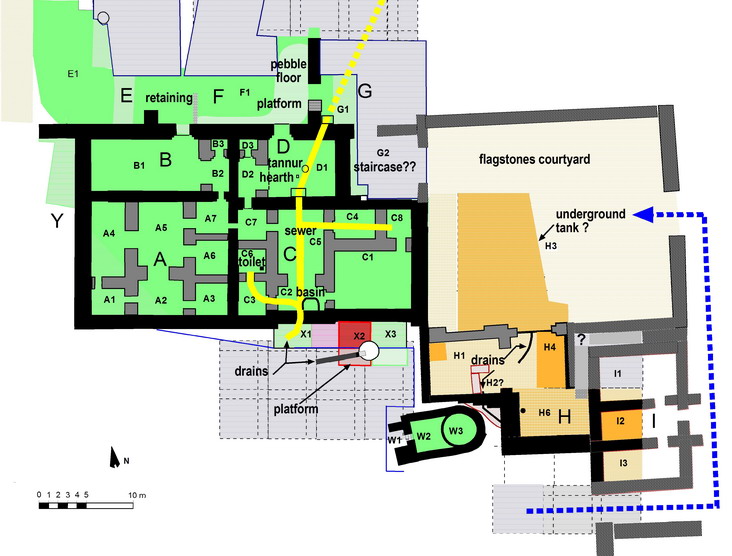
Plan of Palace AK (bigger)
The plan of the palace excavated to date shows two courtyards with rooms to the south and west. Some room functions could be determined, especially a kitchen (sector D) and possibly a working area for textiles (part of sector C). The two excavated courtyards are quite different in function. The courtyard excavated in sector F was not paved and gave access to administrative units located in sectors B and A; this is clear from the fact that a series of door sealings were found next to the doorway that linked sector F with sector B. This courtyard was also linked by a door between it and the kitchen in sector D. Interestingly, a platform made from colored baked bricks probably led from this courtyard to the ceremonial section of the palace with the second courtyard paved with stones.
Back to top: Overview
Ceramic evidence from the Palace
In general, the ceramics from the Akkadian period in the palace are coarser and made with less attention to details of form. For example, bases of conical cups are string cut rather than the smoothed bases of ED III.
While in the ED III period most cups and small bowls were made in Simple ware with larger forms made in Fine Chaff Tempered ware, now conical cups are also made in Fine Chaff Tempered ware.
They can show wheel marks on the interior or exterior prominently (A1.232) and have string cut bases.
While some are made better than others, none are made as well and in as fine a ware type as in ED III.
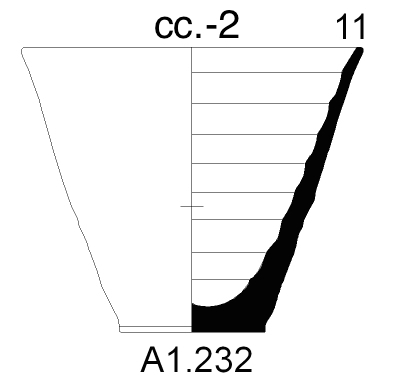
A1.232 |
Small and medium bowls and jars are also made in this ware (A6.9).
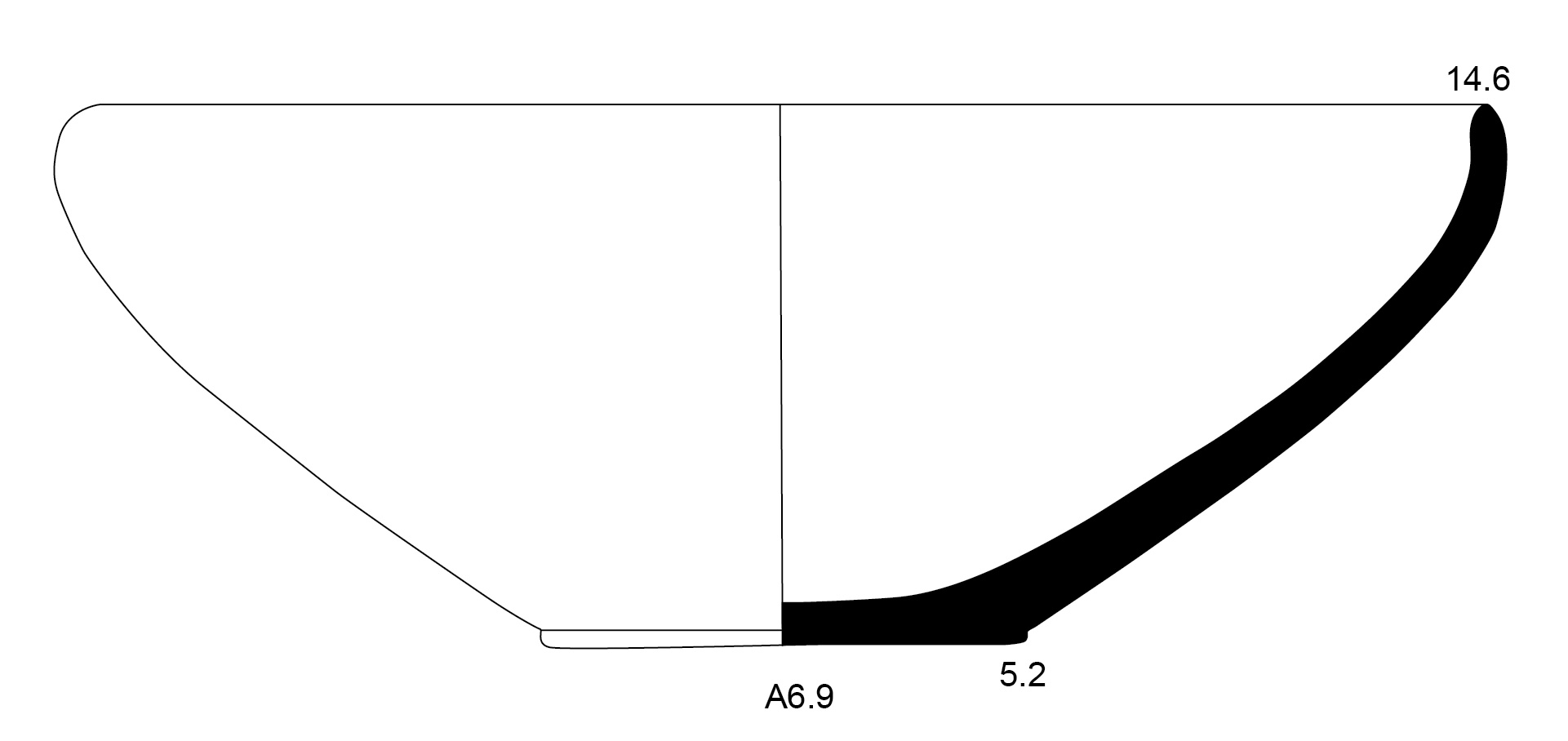
A6.9 |
In the Akkadian period, larger forms, preeminently jars (A7q409-1), are made in Chaff Tempered ware.
Regarding forms, jars are most often made with necks so that carrying them was easier; some of these are decorated with incised wavy and straight line patterns (A7q903.2). Some hole mouth jars were also found in the palace (A7q409-p1).
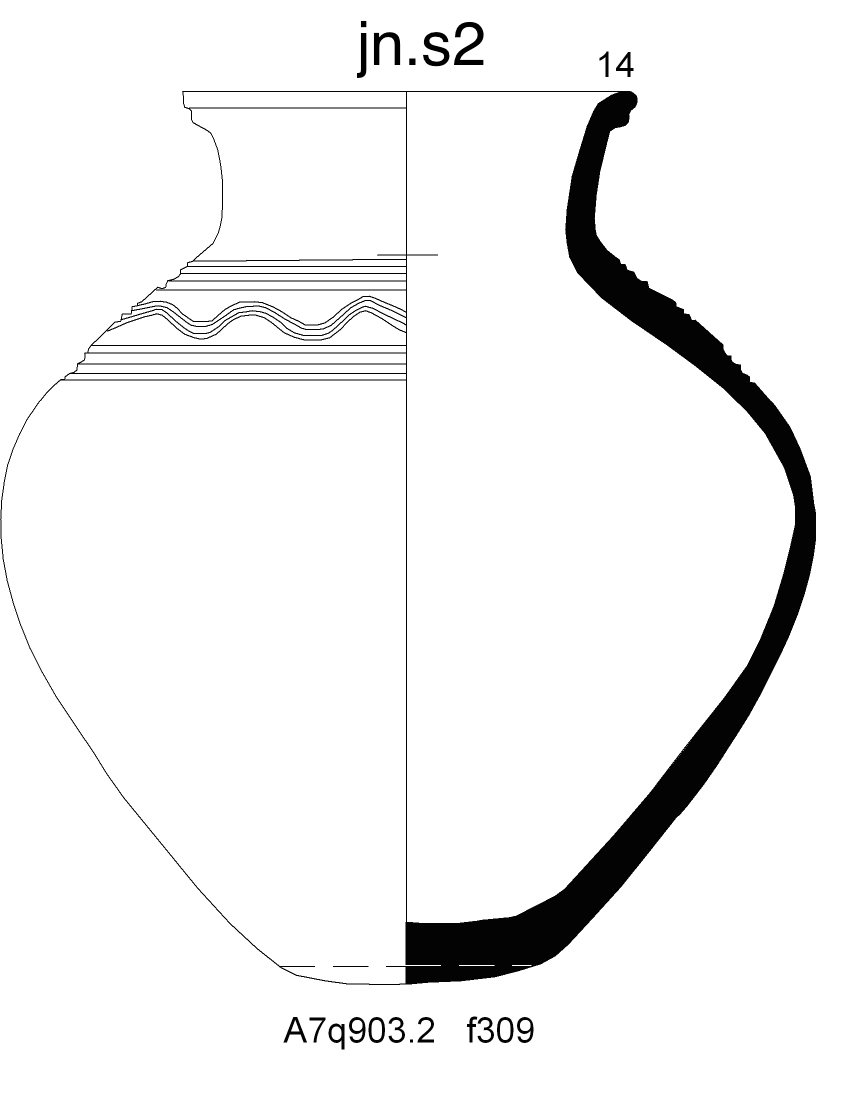 |
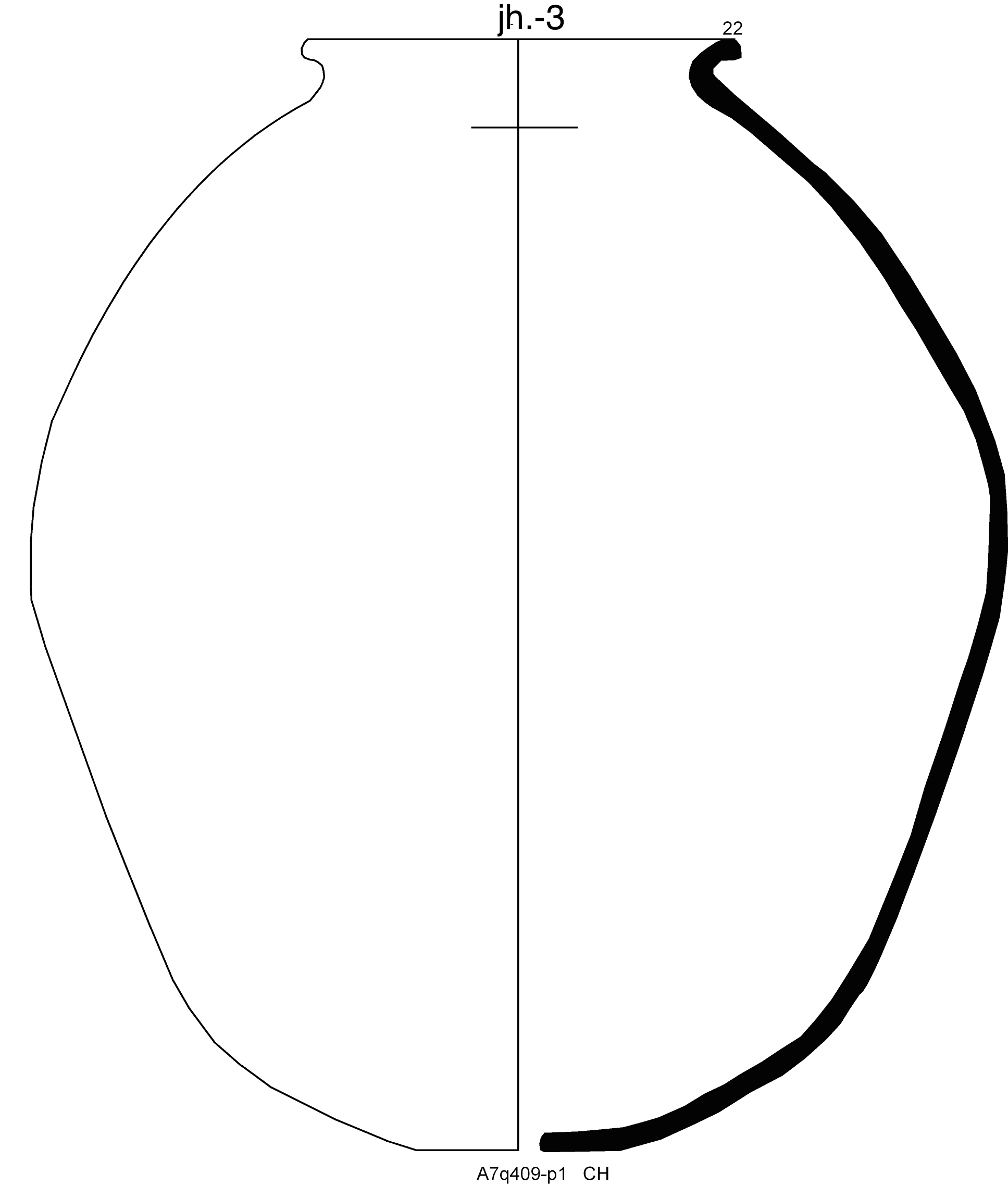

|
In the category of large storage jars that are too large for carrying, hole mouth jars
(A2.133), necked jars
(A10q584.1), shouldered jars
(A10q288-p1) and restricted neck jars
with grooved rims (A6q556-p1) are prevalent types. Grooved rims are also an important chronological indicator within the corpus of Urkesh ceramics.
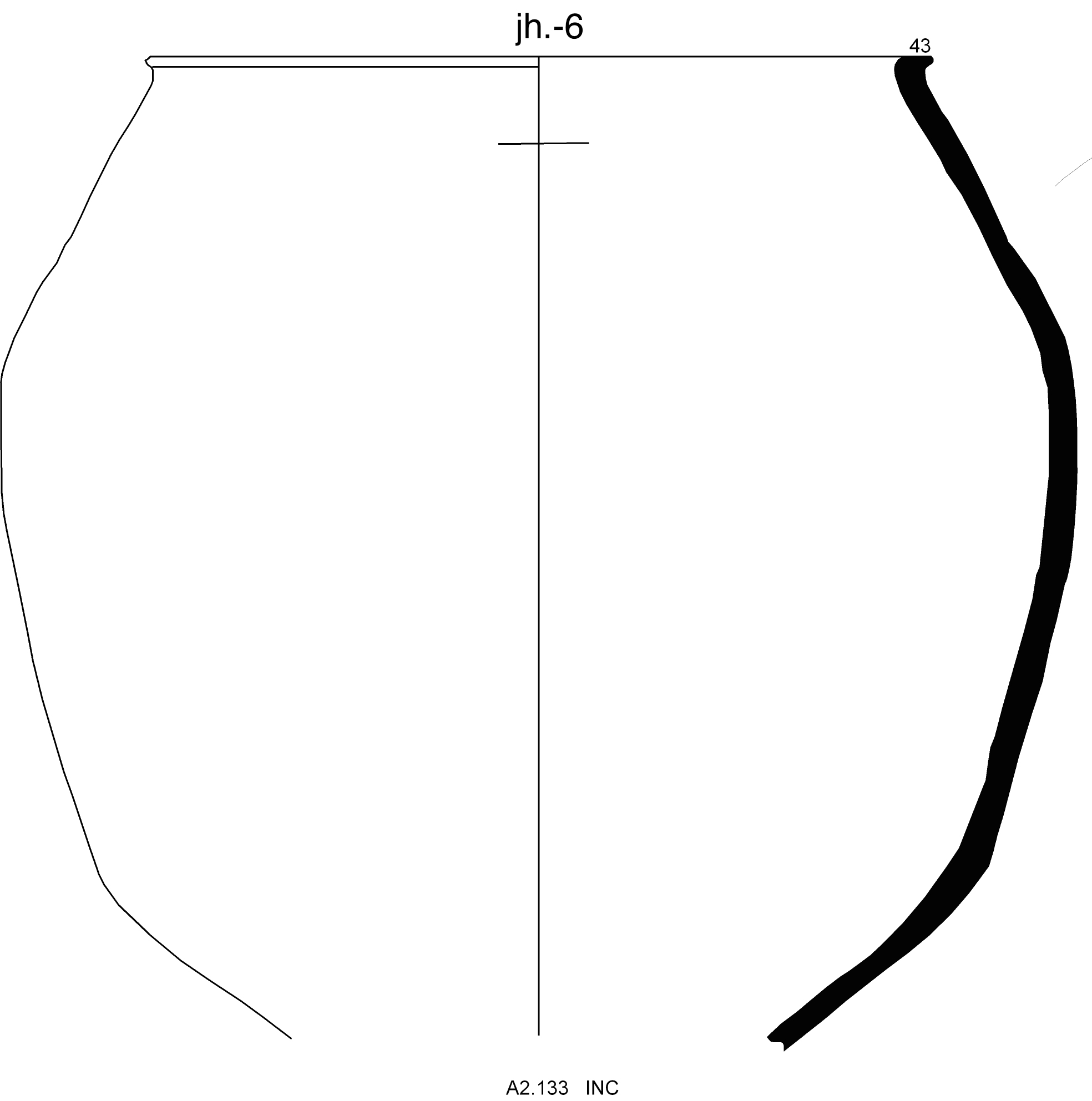 |
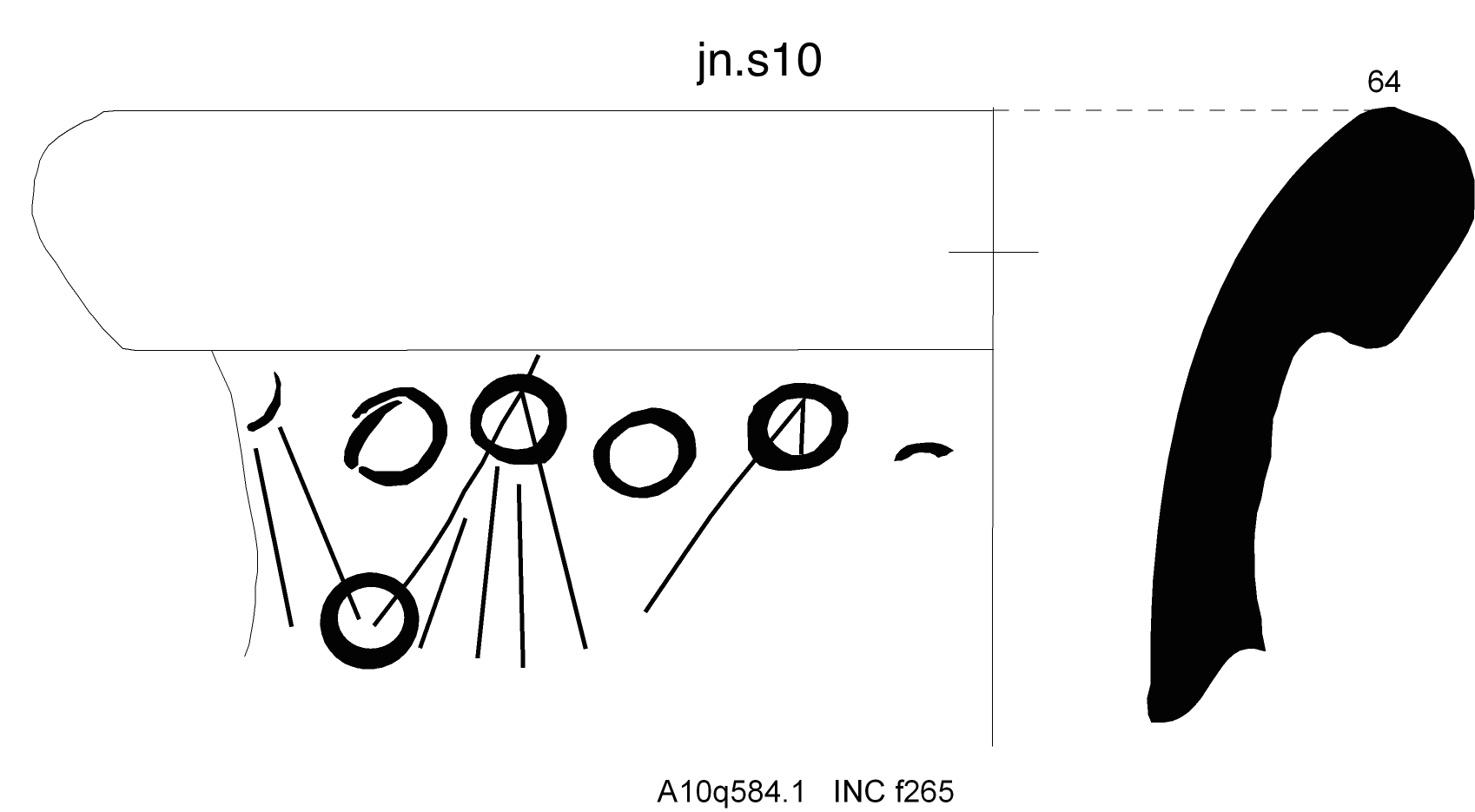 |
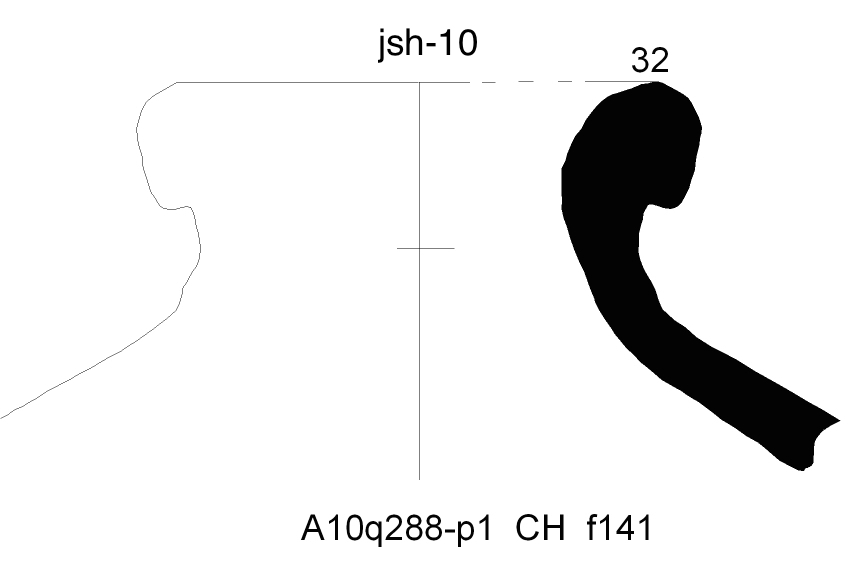 |
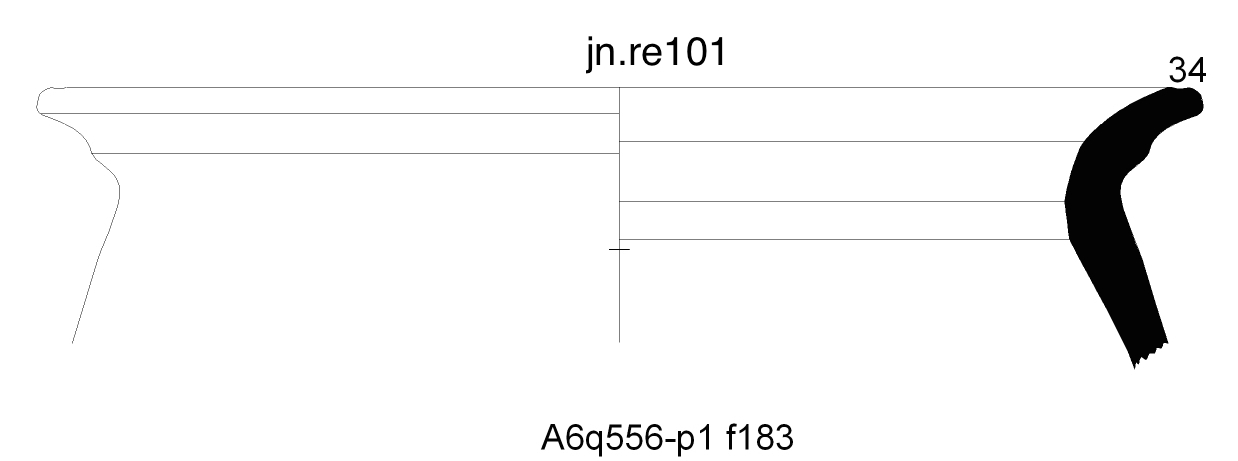 |
Cooking vessels, mostly medium jars, are made in Pebble Tempered ware. This ware contains small quartz pebbles which are efficient heat retainers. The burnished exteriors are brick red in color which blackens over time through use. The shapes of cooking vessels are usually hole mouth globular jars with rounded bases (A5.4). A less prevalent type of vessel is a medium pot with two handles attached to the rim (A2.116). A few plates are found used as cooking vessels (A7q630-p1). Most of these cooking vessels exhibit their actual use in cooking with fire-blackened areas on the exterior; some few of these vessels are fire blackened on parts of the interior.
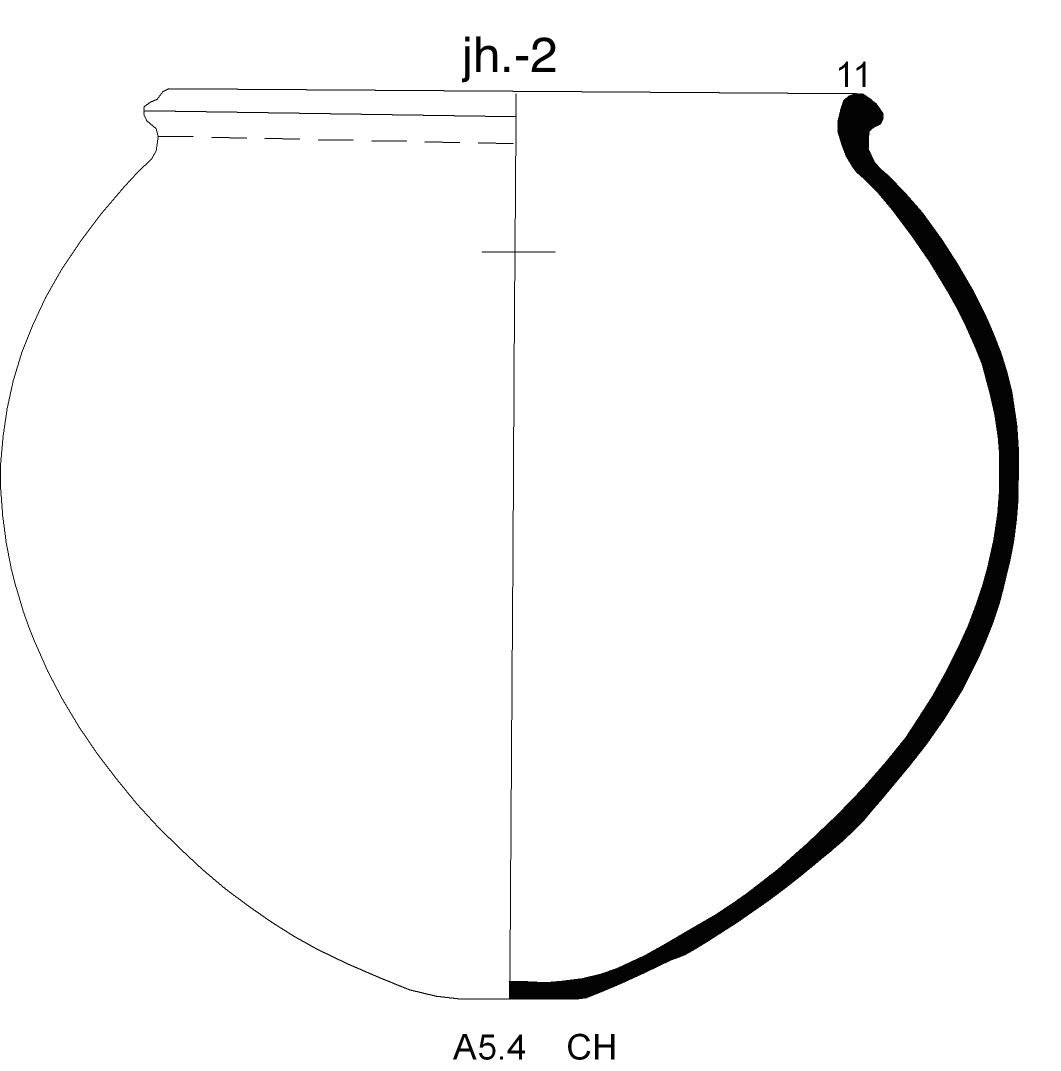
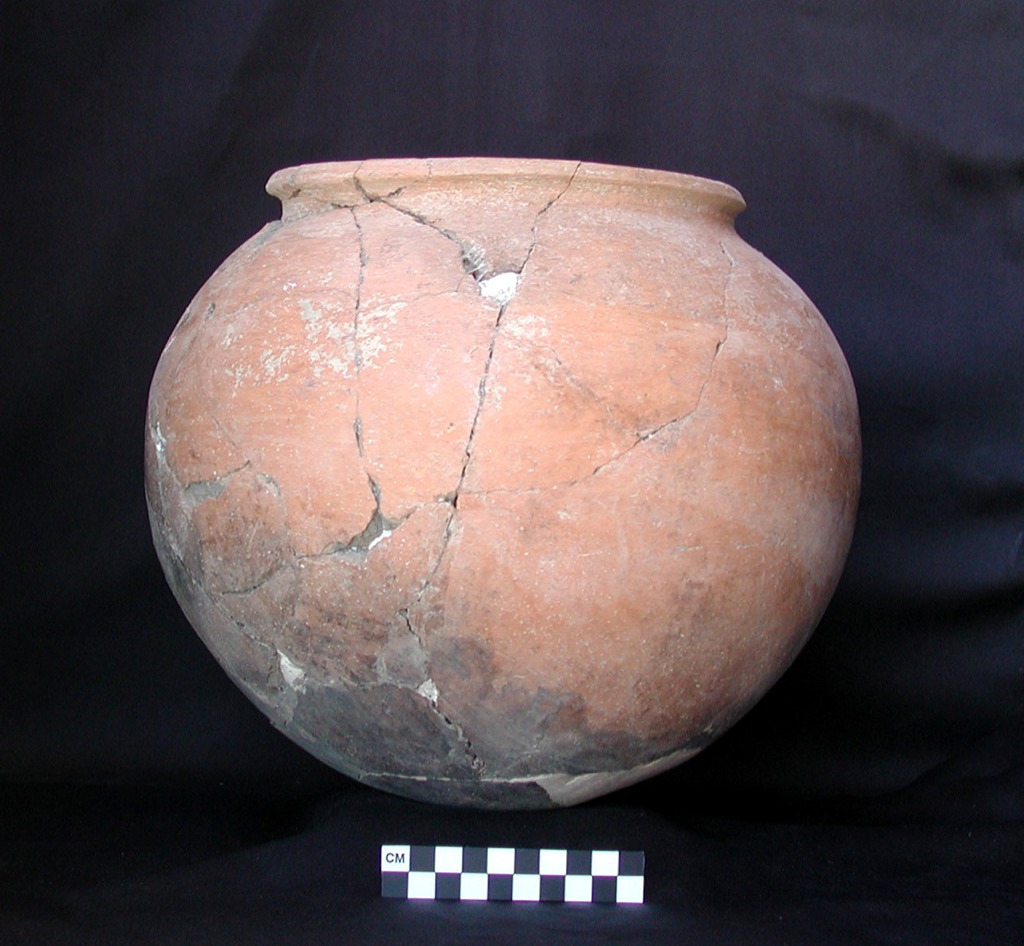 |
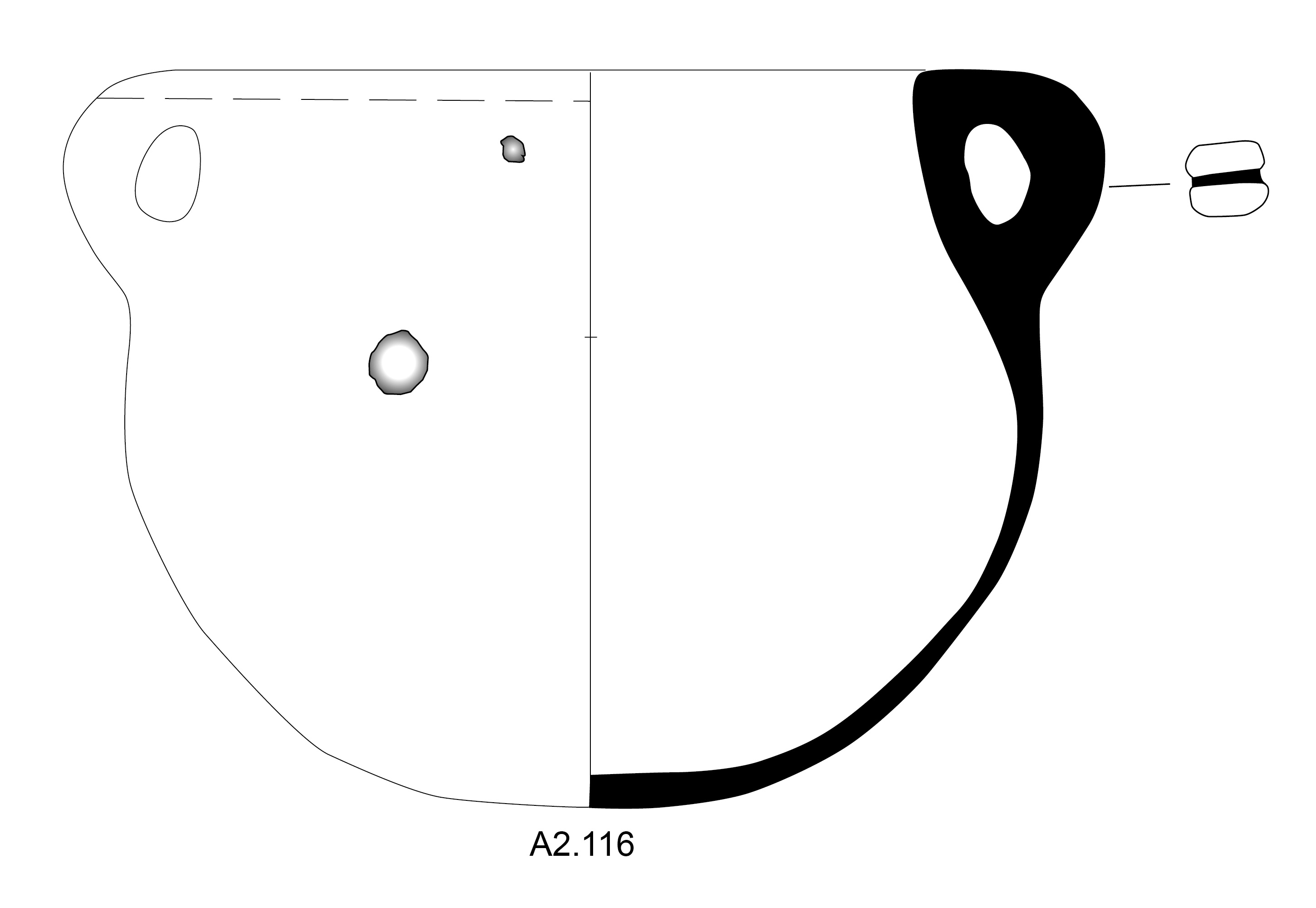
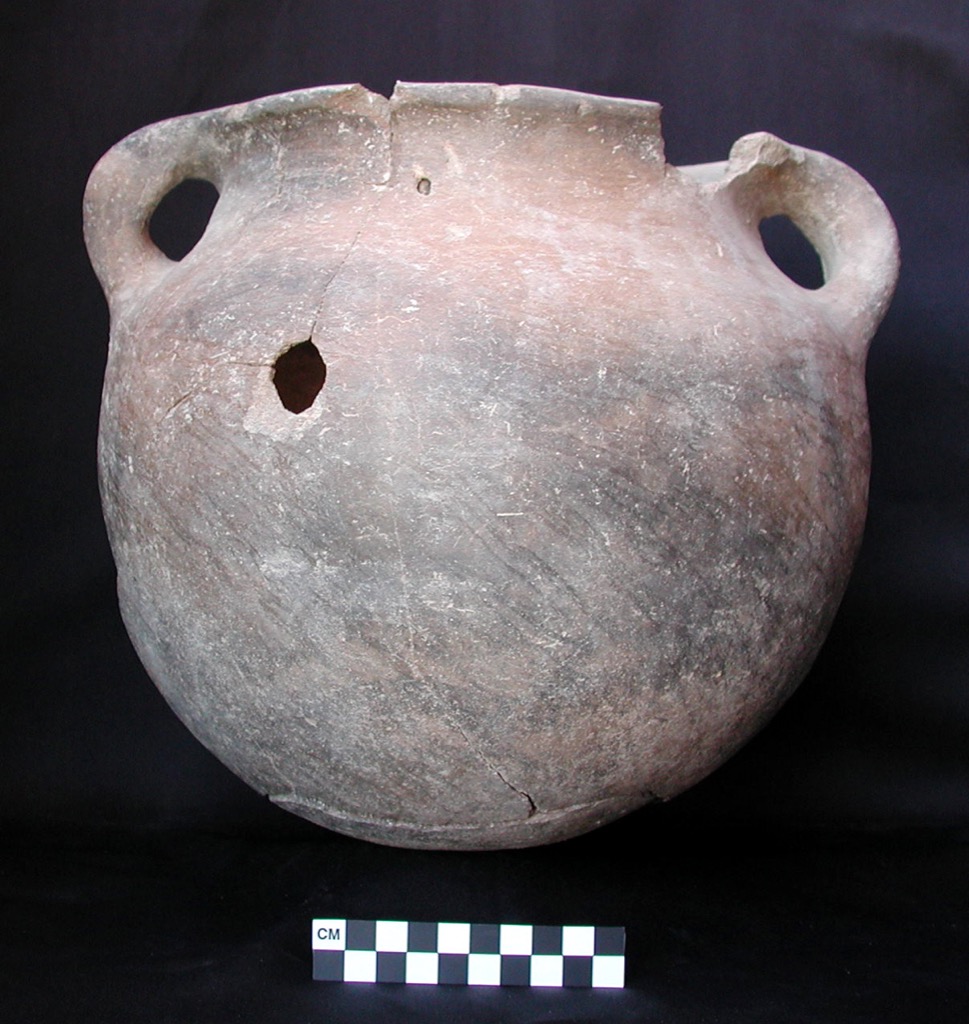 |
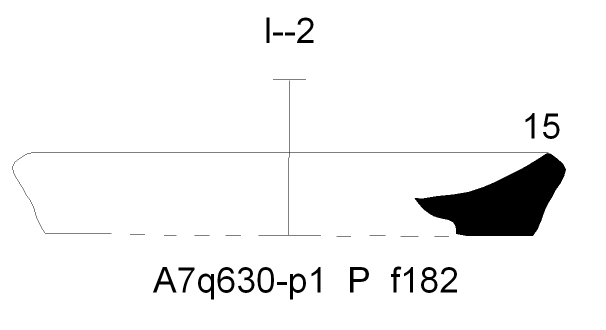 |
In the ware category of Imported and Imitation wares, a href=https://urkesh.org/mz/a/ceramics/texts/a2/ware-bc.htm>Bi-Color Ware is prevalent.
The shapes made in this ware have a red-orange exterior and a gray-brown area around the
exterior of the rim only. The surface is smooth and sometimes appears to have been polished.
Most of the shapes found are round sided bowls
(A1q904-p69) but some globular jars also occur. While it is thought that these vessels came
from the Upper Tigris area, in Urkesh there are vessels made in imitation of this ware
which are coarser than the original vessels.
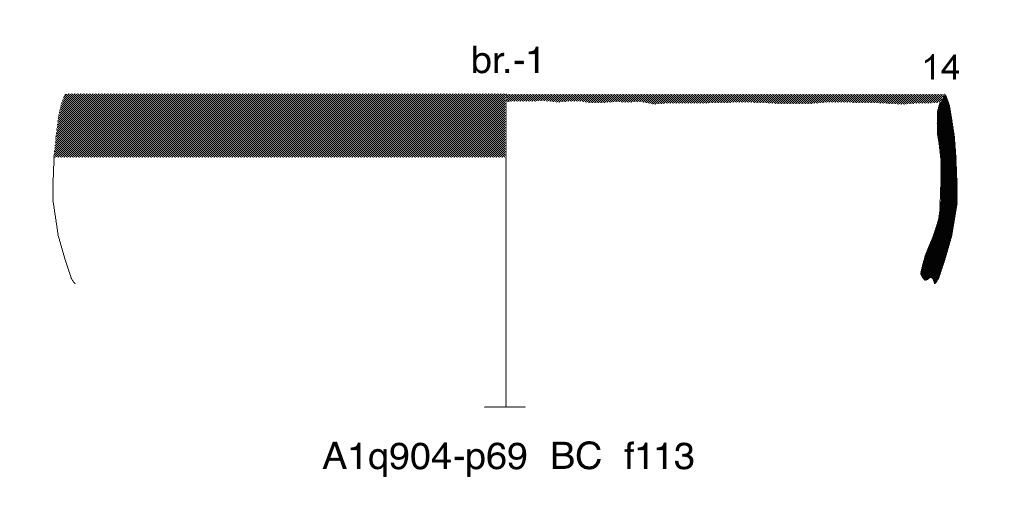 |
Back to top: Overview
Decoration
Few vessels are decorated, none are painted, but incised designs do occur on medium jars and deep bowls (A7q903.2, A1q963-p69, A8q122.1) as well as a few vessels with applied decoration (A5q707-p69).
 |
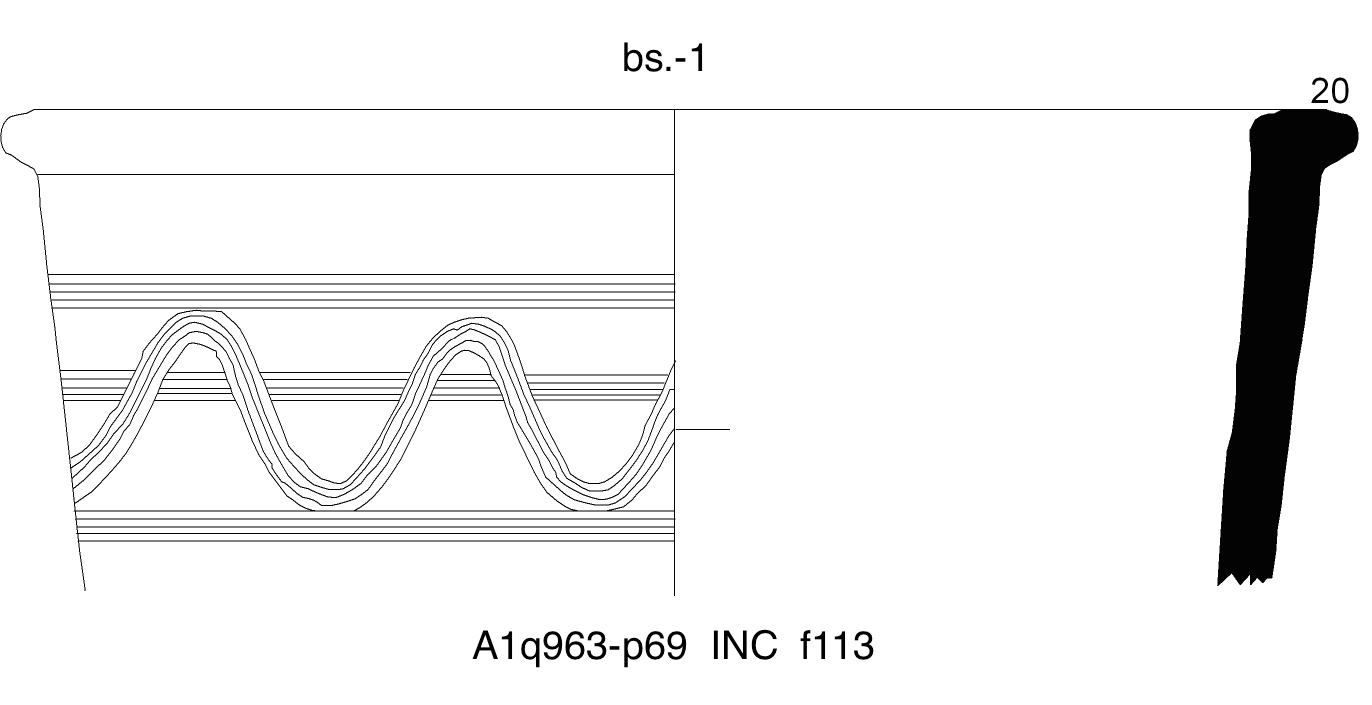 |
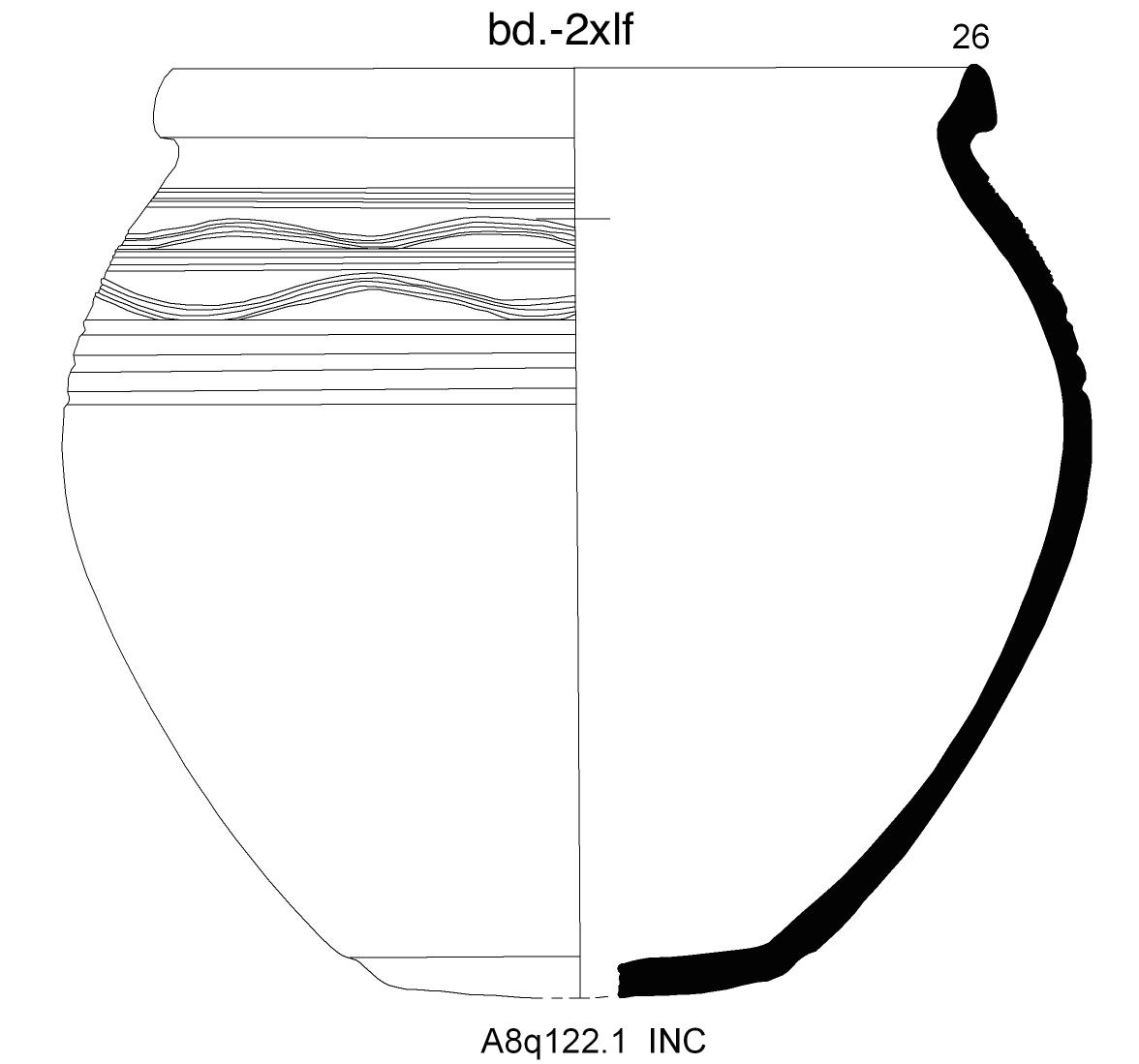 |
 |
Back to top: Overview
Special function shapes
Pierced lug handles occur both as single pierced lugs (A6q593-p14) and double (A12q69.2). They are very rare and must have been attached to vessels with a very specific
and limited function. This is also the case with knob handles and double strand round handles.
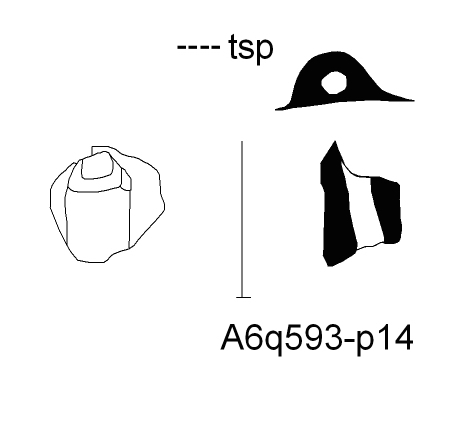 |
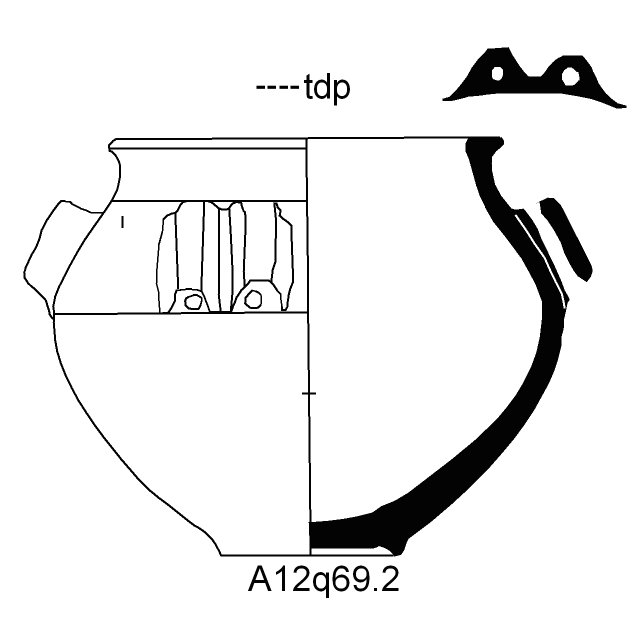 |
A special limited function type of jar is the shape decorated with incised geometric patterns and three applied snakes and scorpions (A13.3).
The snakes are positioned looking from the rim into the jar. These jars are thought to be the
locus of divinatory rituals called in Hurrian altanni. In these rites, the jar is filled with water and the movements of the snakes are seen by the priest from the vantage points of the snake heads. This complete jar and a number of sherds testify to these rituals taking place in Urkesh. For more about this, see also Buccellati 2004, p. 12 and Kelly-Buccelati 2016b, pp. 97, 99, fig. 3.
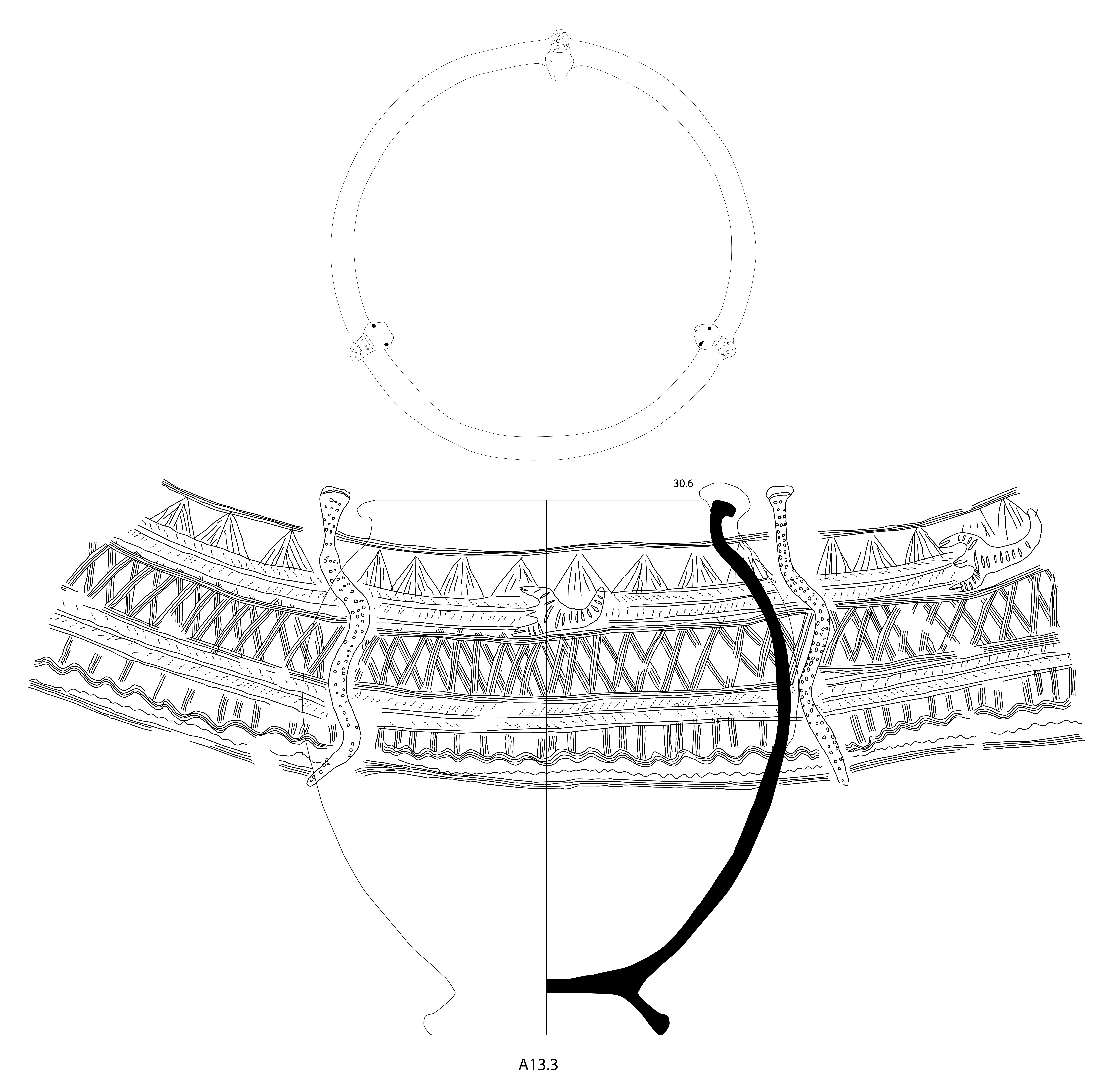
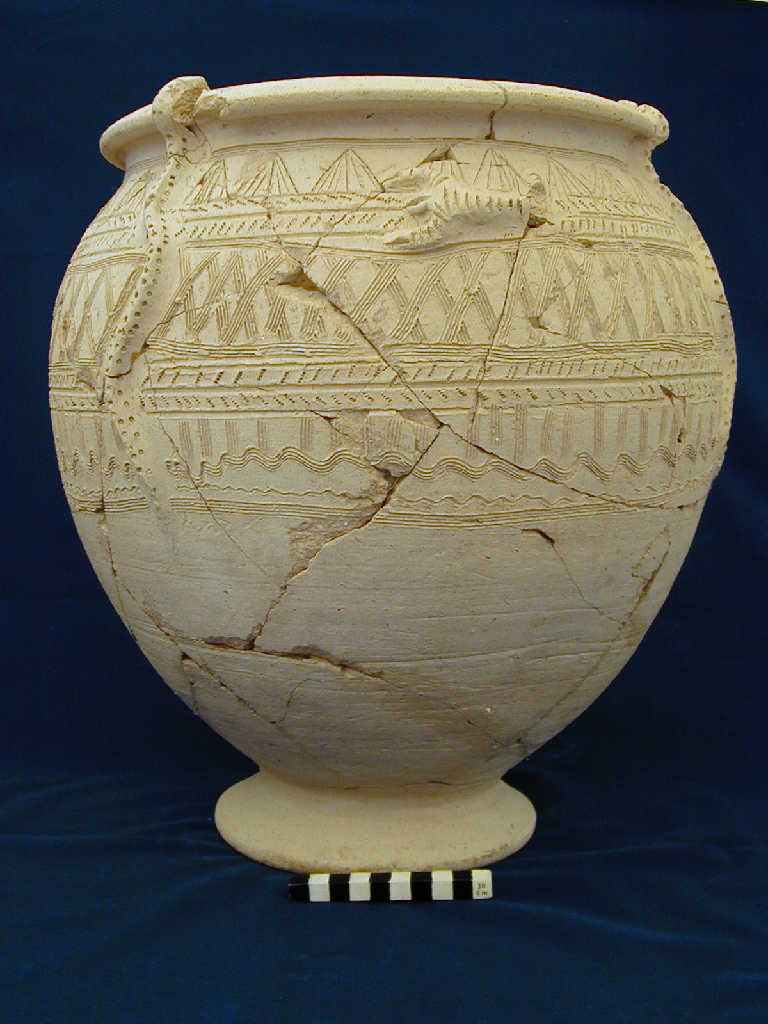
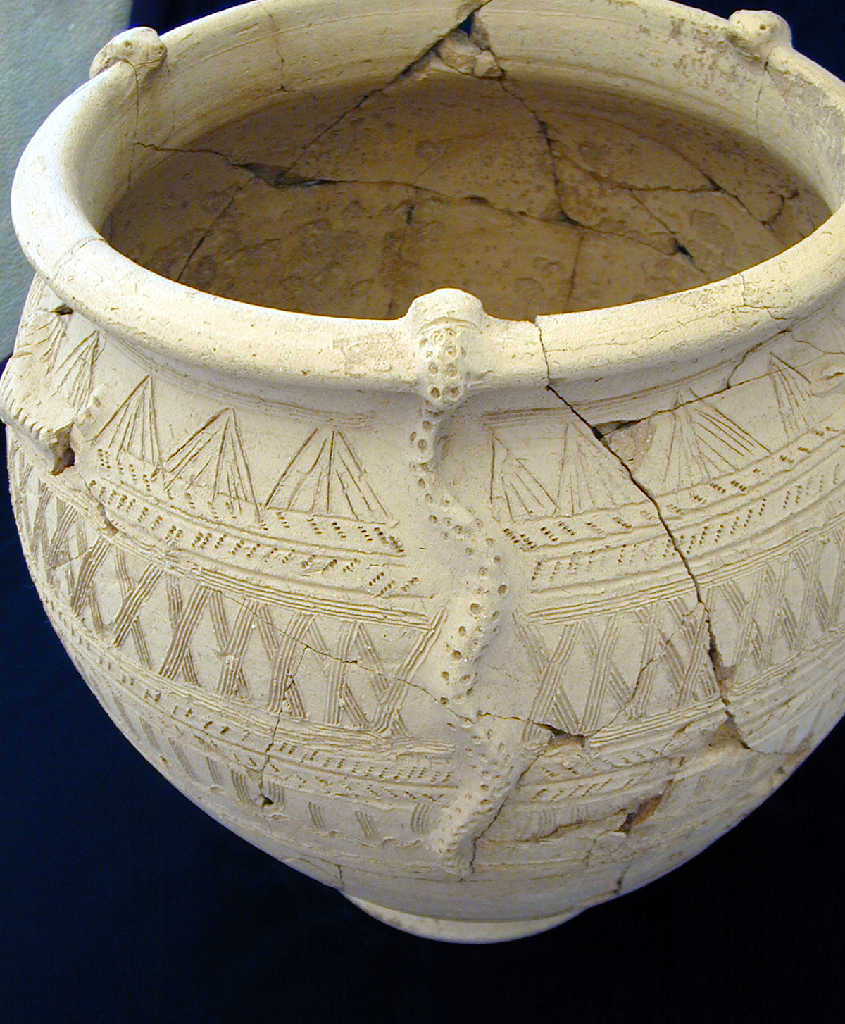
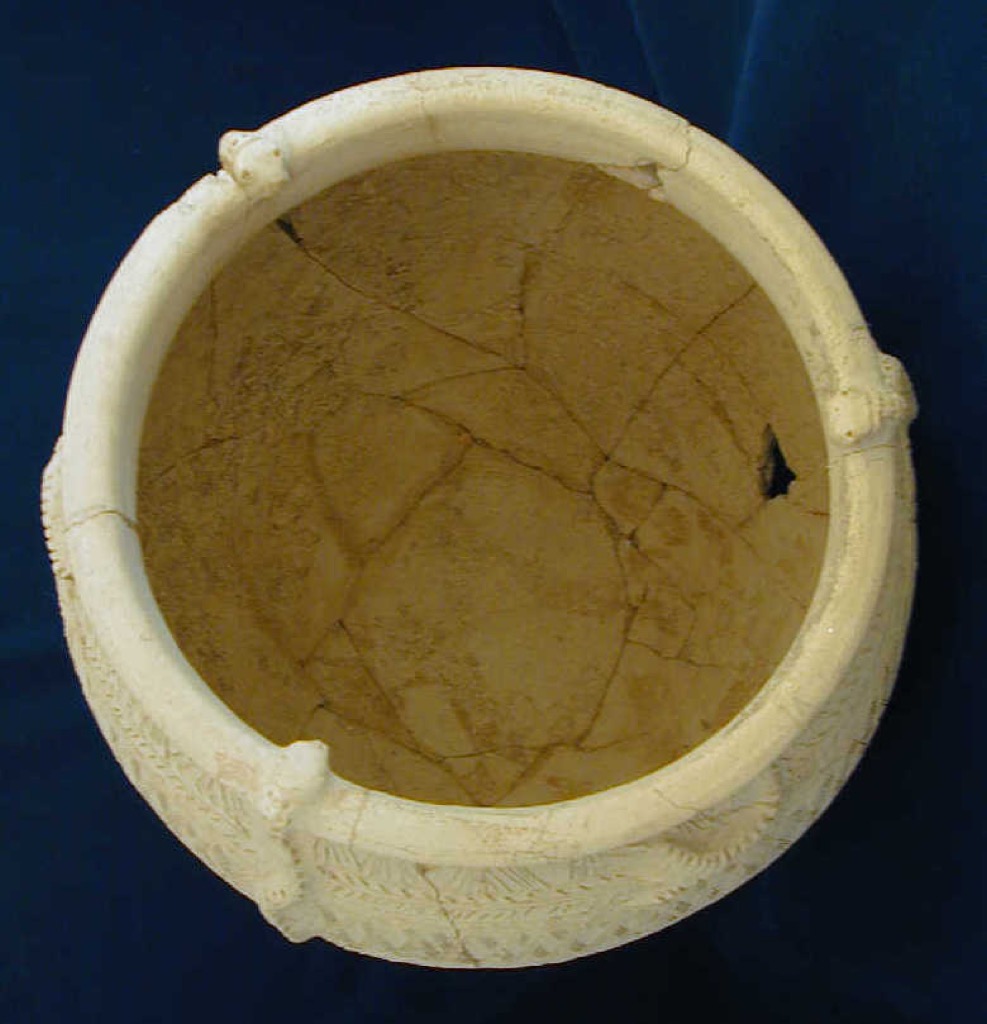 |
Back to top: Overview